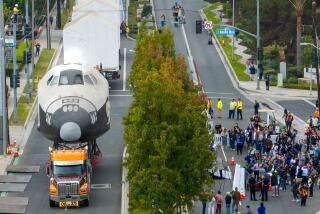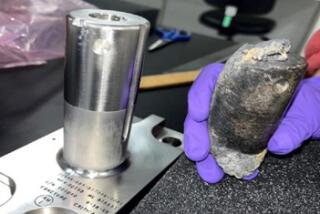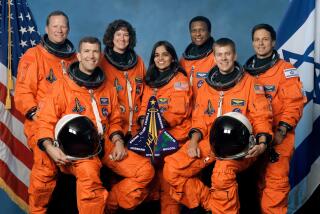NASA Will Let Debris Be Studied
CAPE CANAVERAL, Fla. — Debris from the shattered space shuttle Columbia will be made available to researchers after the investigation into the disaster ends, NASA officials said Monday.
“We’re going to learn from this tragedy instead of just putting it in a silo,” said Michael Leinbach, chairman of the Columbia reconstruction team.
Pieces from the shuttle Challenger disaster of 1986 were put into an abandoned missile silo at Cape Canaveral. The Apollo 1 capsule, in which three astronauts died in a launch pad fire in 1967, is in storage at the NASA Langley Research Center in Hampton, Va.
Leinbach said lending pieces of Columbia to museums for display has also been discussed. “Study, for sure. Display, I’m not sure yet,” he said.
Columbia broke up over Texas during reentry on Feb. 1, killing all seven astronauts aboard. The disaster’s cause is undetermined, but investigators are looking into whether a chunk of foam from an external tank may have hit and damaged the left wing during the launch 16 days before.
Columbia wreckage was scattered over East Texas and Louisiana. Searchers on the ground have recovered more than 32% of Columbia, and hundreds of pieces of debris continue to be found daily.
NASA expects to ultimately collect 40% of the craft; the remaining pieces either burned up as they fell to Earth, or are too small or too well-hidden to be found.
Leinbach said researchers will be asked to apply to inspect specific pieces. Researchers whose requests are approved will be lent pieces for a specified time.
Similar criteria were used for researchers wishing to study moon rocks brought back to Earth by the Apollo missions from 1969 to 1972.






